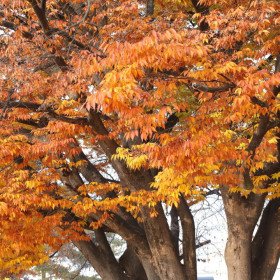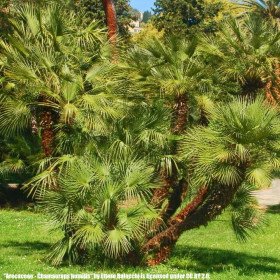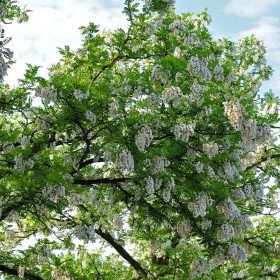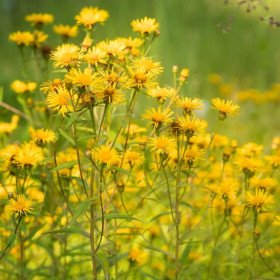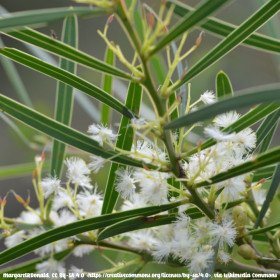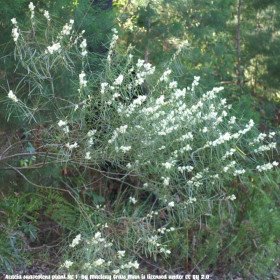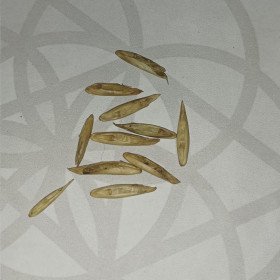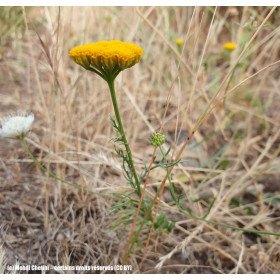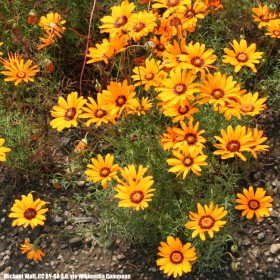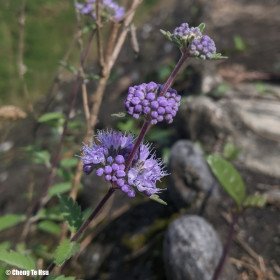20 Graines Faux aloes, Tritome, Tison de satan, Kniphofia
20 Graines Faux aloes, Tritome, Tison de satan, Kniphofia
- Modèle : 20 Graines Faux aloes, Tritome, Tison de satan, Kniphofia
- Disponibilité : 10
- 1,50€
Faux aloes, Tritome, Tison de satan, Kniphofia uvaria mélange |
Kniphofia uvaria, également connu sous le nom de Tison de Satan ou Tritoma, est une plante vivace originaire d'Afrique du Sud.
20 graines
Description :
- Le Kniphofia uvaria forme une touffe dense de feuilles longues et étroites, d'une couleur vert foncé.
- Au sommet des tiges dressées, se forment des inflorescences en forme de grappes coniques. Les fleurs sont tubulaires et de couleur vive, allant du jaune, de l'orange au rouge.
- La hauteur de la plante varie généralement entre 90 cm et 150 cm, selon la variété.
Utilisation :
- Le Kniphofia uvaria est souvent cultivé comme plante ornementale pour ses fleurs attrayantes. Il est populaire dans les jardins de rocaille, les bordures et les massifs.
- Ses fleurs voyantes attirent les insectes pollinisateurs, tels que les abeilles et les papillons, ce qui en fait une plante bénéfique pour la biodiversité.
- Dans les régions au climat chaud, le Kniphofia uvaria peut également être utilisé comme plante de bordure ou pour ajouter une touche de couleur vive dans les jardins.
Semis détaillé :
- Les graines de Kniphofia uvaria peuvent être semées à l'intérieur ou à l'extérieur, selon le climat et les conditions locales.
- Pour le semis à l'intérieur, utilisez un plateau de semis rempli d'un mélange de terreau bien drainant.
- Placez les graines à la surface du substrat et recouvrez-les légèrement de terreau. Les graines sont de petite taille, donc une couche mince de terreau suffit.
- Arrosez délicatement pour maintenir le substrat légèrement humide.
- Placez le plateau de semis dans un endroit chaud et lumineux, à une température d'environ 20-25 °C.
- Les graines devraient germer en 2 à 3 semaines. Une fois que les plantules ont développé quelques feuilles, elles peuvent être repiquées dans des pots individuels ou en pleine terre.
- Si vous préférez un semis direct en plein air, attendez que tout risque de gel soit passé au printemps et semez les graines directement dans le sol préparé. Veillez à garder le sol humide jusqu'à la germination.
Le Kniphofia uvaria préfère les sols bien drainés et ensoleillés. Il est relativement tolérant à la sécheresse une fois établi, mais un arrosage régulier favorisera une croissance et une floraison optimales. Taillez les fleurs fanées pour encourager la formation de nouvelles fleurs et maintenir une apparence soignée.
Etiquettes : faux, aloes, tritome, tison, satan, kniphofia, uvaria, melange, GRAINES DE FLEURS & ARBRES Faux aloes, Tritome, Tison de satan, Kniphofia uvaria mélange, Exotiques & Rares Faux aloes, Tritome, Tison de satan, Kniphofia uvaria mélange, Fleurs & Herbes ornementales Faux aloes, Tritome, Tison de satan, Kniphofia uvaria mélange, Faux aloes, Tritome, Tison de satan, Kniphofia uvaria mélange GRAINES DE FLEURS & ARBRES, Faux aloes, Tritome, Tison de satan, Kniphofia uvaria mélange Exotiques & Rares, Faux aloes, Tritome, Tison de satan, Kniphofia uvaria mélange Fleurs & Herbes ornementales






